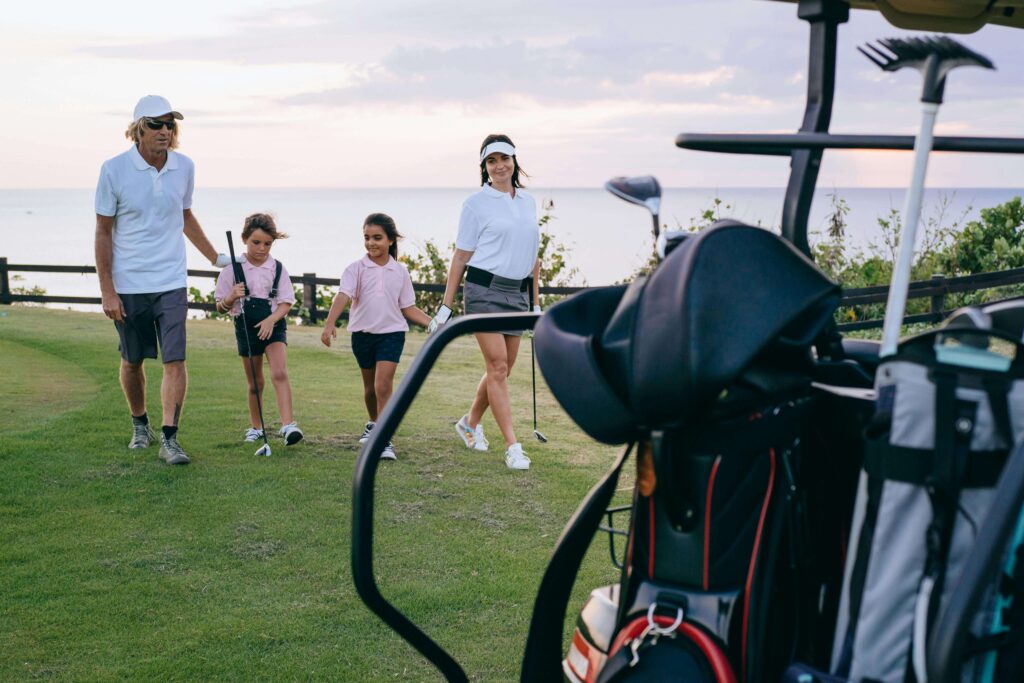
For golfers who love to travel, a reliable golf travel bag is essential. From weekend getaways to dream golf trips across the globe, these bags safeguard your equipment, keeping clubs and accessories safe in transit. With various options on the market, understanding the features, types, and benefits of golf travel bags can help you make an informed choice and protect your gear on the road. Here’s a guide to selecting the right golf travel bag for your next adventure.
The Significance of a Golf Travel Bag
The purpose of golf travel bags is to shield your equipment from the rigors of transportation. Golf clubs are an investment, and the hazards they encounter during transportation—such as rough treatment, rain exposure, or unintentional drops—can result in expensive damage. Investing in a high-quality golf travel bag helps protect your clubs and ensures they arrive in the same condition as when they were packed. Additionally, golf bags make carrying and organizing your gear easier, with various compartments for accessories, shoes, and other essentials.
Types of Golf Travel Bags
Golf travel bags come in three main varieties, each with special characteristics:
- Travel bags made of hard shell for golf
These bags are built with solid outer shells (typically made from ABS plastic or similar materials), providing maximum protection. Hard-shell bags are particularly suitable for air travel since they can withstand rough handling and protect against impact damage. However, they tend to be heavier and may take up more storage space than other options.
Pros:
- provides clubs with the best protection.
- Highly durable, ideal for air travel.
Cons:
- Bulky and heavier than soft bags.
- More expensive than other types.
- Soft-Sided Golf Travel Bags
Soft-sided bags are typically made from durable, weather-resistant materials, such as nylon or polyester. While they may not offer as much protection against heavy impacts, they are lighter, more flexible, and easier to pack. Many soft bags also feature reinforced padding around the club heads to provide extra protection without adding too much weight.
Pros:
- Lightweight and more accessible to transport.
- Often more affordable than hard-shell options.
Cons:
- Less impact-resistant than hard-shell bags.
- It may not provide as much structural support.
Hybrid Golf Travel Bags
Hybrid bags combine elements from both hard-shell and soft-sided designs. They often feature a hard-shell top to protect the club heads, with a soft-sided body for flexibility and lightweight portability. This type of bag strikes a balance between protection and ease of travel.
Pros:
- Good balance of protection and weight.
- Typically, it offers more flexibility and easier packing.
Cons:
- It may be pricier than standard soft bags.
- Can be bulkier than a fully soft-sided bag.
Important Things to Look for in a Golf Travel Bag
A few essential characteristics will determine how well a golf travel bag meets your needs:
Defense
Look for bags that are adequately cushioned, especially around the club heads, which are the most vulnerable. While soft-sided bags should have reinforced padding to protect against minor impacts, hard-shell and hybrid designs offer additional protection.
The weight
The bag’s weight matters for two reasons: ease of handling and potential baggage fees. Hard-shell bags weigh more, but soft-sided bags offer lightweight alternatives for golfers concerned about airline weight limits. Most airlines have a standard weight allowance of around 50 pounds, so consider the weight of your clubs and bag combined.
Size and Capacity
Ensure the bag fits your golf set, including your longest driver. Many travel bags can accommodate oversized clubs but double-check dimensions to ensure compatibility. Additionally, bags with extra compartments or pockets make it easier to carry accessories like balls, gloves, and shoes.
Mobility and Wheels
A golf travel bag with wheels—preferably high-quality, multi-directional wheels—makes navigating airports and parking lots much more accessible. Some bags also feature handles or straps for easy lifting and manoeuvring.
Durability
Choose a bag made from solid and durable materials like nylon, polyester, or ABS plastic. Weather-resistant materials protect against rain, while reinforced seams and high-quality zippers increase the bag’s lifespan.
Popular Golf Travel Bag Brands
Several brands specialize in creating high-quality, reliable golf travel bags. Here are a few of the top options:
- Club Glove: Known for their durability and design, Club Glove bags are popular among pros and frequent travelers. Their Last Bag series is particularly praised for its padding and reliable zippers.
- Sun Mountain: Sun Mountain offers a range of golf bags, including hard-shell and hybrid designs. Their ClubGlider series is known for its unique wheel system, making it easy to manoeuvre even in crowded areas.
- Bag Boy: Bag Boy’s T-10 and T-2000 series offer excellent protection, with various hard-shell and hybrid options designed to keep clubs secure while remaining lightweight.
- CaddyDaddy: Offering more budget-friendly options, CaddyDaddy travel bags provide reliable protection and are often praised for their padding and spacious interiors, which can fit oversized clubs and additional gear.
Packing your golf bag properly can reduce the risk of damage and keep your clubs safe during travel. Here are some useful tips:
- Use Club Headcovers: Place covers on each club to minimize scratching or impact damage. Some golfers also wrap the club heads with a towel or bubble wrap for extra cushioning.
- Reinforce the Bag’s Interior: Many golfers place a broomstick or other solid rod inside the bag to absorb impacts and prevent the clubs from bending.
- Pack Heavier Items at the Bottom: To help balance the bag and make it easier to handle, place heavier items, such as golf balls and shoes, at the bottom to distribute weight evenly.
- Fill Extra Space with Clothing: Packing some clothing items or towels around the clubs can act as padding and prevent the clubs from shifting during travel.
- Verify Airline Policies: To prevent unforeseen costs or issues at the airport, check the rules ahead of time. Every airline has different policies and weight restrictions for athletic gear.
Extra Things to Think About When Bringing a Golf Bag on a Trip
When travelling with golf equipment, keep the following in mind to ensure a smooth trip:
- Baggage Fees: Sports equipment may incur additional fees on certain airlines. You can prevent surprises by being aware of the weight of your packed bag and researching baggage regulations beforehand.
- Insurance: Take into account sports equipment travel insurance. This can be a lifesaver if your clubs get damaged or lost in transit, covering repair or replacement costs.
- Rental Options: If you’re travelling a short distance or don’t want to deal with baggage, renting clubs at your destination might be an option. Many golf resorts offer high-quality rentals, though it’s essential to reserve them in advance. Click here for more info
Conclusion
Choosing the right golf travel bag can make all the difference in ensuring your clubs arrive at your destination safely and securely. By considering factors like protection, weight, and durability, and by following packing best practices, you can enjoy peace of mind and focus on your game. Whether you’re an occasional traveller or a globe-trotting golfer, investing in a high-quality golf travel bag is a smart way to protect your gear and make travel more convenient.







